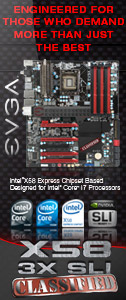«Previous Page 1 2 3 4 5 -View All- Next Page»
Introduction
Computer chassis are all the range these days, with many a shape and size available for purchase. These products come in many differing colours and concepts; some are more unusual than others. However one manufacturer has tipped the scales in their favour (in the unusual computer chassis concepts) is Lian Li. The T1 Pit-stop case is the product in question and has come in a rather unusual design. Billed as a ‘test-bench’ chassis for those whom use the mini ITX board standard, the product is certainly eye catching and almost ‘shock worthy’. However can it live up to the reputation garnered over many years by Lian Li. Will it be a case (pardon the pun) of style over substance? Let us read on and find out.
Company Background
“Lian Li Industrial Co., LTD was founded in 1983. They are the one of the largest and most reputable manufacturer of aluminium PC cases in Taiwan. With over twenty years of experience in the computer products field, their dedicated team of engineers, production specialists and administrative staff provide the finest quality accessories available on the market.
In 1993, Lian-Li Introduced their new lines of computer hardware, including brackets (for case and interfaces), Mobile rack (for H.D.D.), mounting kit (for FDD & HDD), aluminium PC cases, IPC, external cases, server cases and more. They also provide OEM and ODM services, you are assured of designs that will meet your exact specifications, and innovative ideas in manufacturing that will give your products an essential market edge.
Our outstanding quality has earned us ISO 9001 certification for all of our products. In addition, we back up our quality assurance with a two-year guarantee on most of our products.”
Packaging
The Lian Li T1 chassis comes in a deceptively small box, a little smaller than a briefcase with the image of the chassis (if one could call it that) on the outside of the carton. With Lian-Li stamped on the upper left and the words ‘special edition’ branded on the lower left. One can wonder how ‘special’ this special edition really is? Lian Li are known for high quality yet expensive cases that are only made from aluminium and nothing else. The aforementioned company is yet to manufacture a case out of steel; however this is not a bad thing.
 |
 |
The rear of the box also proudly displays the case, looking something that’s been birthed from a ‘war of the worlds set! War of the worlds I hear you ask? Yes the original war of the worlds and not the poor remake of the same film.
 |
 |
Inside shows all the components well protected by the foam padding and it was good to see that each of the parts have been individually wrapped and packed in the box. It is at this point that we were reminded of a young-boys meccano set.
Let us move on to the assembly of the chassis.
Assembly
Immediately we noticed that if the enclosed instructions were used, there would have have been some difficulty in the assembly of this case. Frequently we had to refer to the image on the box to double check on the progress. Whilst referring of the aforementioned user guide we feel obliged to mention that the assembly guide was a little poor in quality, only being in black and white, with the illustrations being very dark and almost as though they were photocopied. However being an ex-meccano boy, this writer had fun in devising a solution to the problems encountered by using the enclosed guide.
Step one was making the head of the spider, this part was as easy as pie. One simply screwed the the top half (motherboard tray) and the bottom sections which housed the hard disk drive and the SLIM-Line DVD burner together. At this point it would have been nice for Lian Li to include some form of converter or ‘caddy’ to enable this case to use a solid state drive in the HDD section. Once these two sections where together the ‘head’ of the spider was formed.
 |
 |
 |
 |
The ‘head’ of the spider has two red LED’s that form it eyes.
 |
 |
Step Two: Now this is the part where the Lian LI instructions go awry! It then describes that you must then mount the ‘head’ onto the ‘body’ of the spider. Once completed, it then asks you to connect the ‘knees’ which form the first section of the legs. However, if one was to do this first then mounting the front ‘knees’ whilst the head section was attached was a rather ‘fiddly’ affair (this is an under statement). So a solution was found, that the builder of this case would have to install the ‘knees’ first and THEN mount the head!
|
|
Each joint and knee on the leg sections have a small barrel; which are placed inside the legs themselves to form the joints. However, these are aluminium and they should have been manufactured from steel to lend strength into the legs and to stop thread stripping by over eager system builders.
Next and before installing the ‘leg’ sections we mount the ‘head’ onto the ‘body’ of the chassis. This is an easy process, of which is accomplished by sliding the head onto the body joints and installing the four thumb screws.
Step Four: Once the legs were fully attached then the rubber tips that go onto the feet of the spider were simply slid on; rather like the skin of a sausage. Moving back to the leg sections we notice that these areas use thumb-screws to allow for adjustment of the position of the legs which make it look like an insect that is about to launch itself at its prey. Once again we could not shake the feeling that because of the lack of strength in the chassis knees, the weight of a full-sized PSU would possibly overload the knees.
It is at this point we would like to commend Lian Li for remembering to include some rudimentary wire management to enable the case to look tidy. However the engineers could have simply drilled four 4-5mm holes in the body to allow for stands, in order to mount a 120mm water cooling radiator (this reviewer is modifying the case to allow for this)
Step Five: The final part of the assembly would be to install the PSU mounting bracket. Normally the consumer would clamp the brackets around the PSU and screw the brackets into the holding mounts of the aforementioned component. Afterwards the whole assembly screws onto the chassis body. However for demonstration purposes we have chosen to simply screw on the PSU clamps.
Come into my parlour said the spider to the fly!
The following images shows the completed chassis, looking awesome in a rather scary kind of way.
What have we learned from this? The first would be though there are some minor flaws in the case build and of the instructions, it is still rather simple to build. The case also pleases small boys such as the writers son whom was very enthusiastic about helping to build this chassis
It has been a pleasure to build this case, it was a couple of hours of entertainment for this writer and his son.
Conclusion
It is not often that we at Overclockerstech feel truly honoured to review case. We have been screaming for something new and creative for a long time and the Lian Li spider test bench has done it. Yes we know a spider has eight legs and not four, however this comes close and is the most apt.
For a tough test station this case does NOT fit the bill as it is too fragile, however if one wishes to use this as a Lanparty computer, then it would be the centre piece of the entire show. There are some minor flaws that need to be addressed, such as the barrels that form the lynch pin on the spiders knees! They would certainly need to be manufactured from steel to give strength to the spiders knee and leg joints. Lastly the assembly instructions must to be changed to allow a more clear build as they are very dark and look photo-copied.
Normally these small issues would earn the chassis a silver award; however one cannot ignore that this case is the very essence of creativity and is what we on this website have been screaming for.
In short Lian Li have shown pure creativity in a box; that promises to show a shining brilliance in the future computer cases that are yet to come.
Pros:
- Its a spider case
- Again its chassis shaped like a spider!
- Awesome looks
- Good quality anodising
- Pleases small boys
- Pleases big boys (the men)
- Ahhhhhhh memories of Meccano!
- High quality aluminium
- Box presentation and packaging
- At a Lan Party you will be worshipped
- BEGS to be water cooled!
- PURE Creativity in a box!
Cons:
- Aluminium knee/leg joints make it more fragile than it should be!
- Photocopied Instructions
- No PCIE panel for non H55 boards
Overclockers Tech are please to announce a 9.1 out of ten and therefore a gold award
Discuss this review in our forums at http://www.overclockerstech.com/forums/showthread.php?p=14861#post14861
Author: Gilgamesh

































